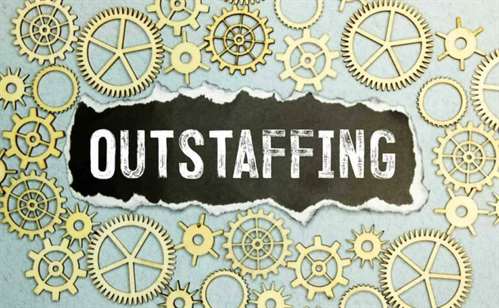What is Continuous Integration: Testing, Software & Process Tutorial
Content
The Jenkins project started in 2004 under the name Hudson. The developer Kohsuke Kawaguchi, who worked at Sun systems, wanted to create a method to perform continuous integration. The idea was to test the code before committing to avoid breaking builds. Continuous Delivery is a small build cycle with short sprints where the aim is to keep the code in a deployable state at any given time.
- TeamCity is a product of JetBrains, a Czech software development company well-known for building popular integrated development environments like PyCharm and IntelliJ.
- It requires a Java 8 VM and above and can be run on the Oracle JRE or OpenJDK.
- This allows pipelines to take advantage of the distributed architecture of Kubernetes to easily scale both on the number of running workflows and within each workflow itself.
- This simplifies installation while restricting resources to a single computer, virtual machine, or container.
- MacOS plans range from $39/month for 2x concurrency to $249/month for 7x concurrency and email support.
- First and foremost, a big benefit of Jenkins is that it’s an open-source tool with more than 47,000 active installations and over one million users.
With Jenkins being a server-based application, you need a web server, like Apache Tomcat, to make the application operable. By integrating a large number of testing and deployment technologies, Jenkins lets you deliver your software products continuously. It is capable of combining the various phases of the development life cycle, such as build, test, package, deploy, analysis, and many others.
The Absolute Must-haves for Software Development Teams
CI is not entirely an essential prerequisite required for creating a stable software product. However, it definitely serves an important role when developing software products or components that require frequent changes. Furthermore, it also ensures that all the components of an application are integrated properly. After you have grasped all the essential steps to build a CI/CD pipeline using Jenkins, a hands-on demonstration will serve as the icing on the cake. Jenkins happens to be the best fit for building a CI/CD pipeline because of its flexibility, openness, plugin-capabilities, and ease of use.

Docker and container orchestration components like Kubernetes make it easier for teams to automatically set up and tear down these environments as part of the CI/CD process. The open-source project Spinnaker, created by Netflix, provides a robust Continuous Delivery and Continuous Deployment solution. The basic functionality of Jenkins is to execute a predefined list of steps, for example, to compile Java source code and build a JAR from the resulting classes. The trigger for this execution can be time or event-based say every 15 minutes or after every new commit. When it comes to a microservices architecture, Jenkins becomes necessary. So when you incorporate Jenkins into your suite of development tools, you will find it easier to develop applications that leverage the microservices architecture.
GitLab
More recently, Jenkins has been adapted to run in a Docker container. There are read-only Jenkins images available in the Docker Hub online repository. The Jenkins X project was formerly launched in 2018 with the goal of creating a modern, cloud native Jenkins. It is also a project under the guidance of the CD Foundation. Its architecture, technology and pipeline language are completely different from Jenkins. Jenkins X is designed for Kubernetes and uses it in its own implementation.

While declarative pipelines use a declarative programming model, scripted ones leverage the imperative programming model. It is important to note that both these types of pipelines run on the Jenkins subsystem. There is no difference in the performance and problem solvability perspective. Scripted what is jenkins and declarative are the two types of Jenkins pipelines. When a DevOps engineer writes a Jenkins pipeline, they choose either to create in the scripted syntax or the declarative one. I have a question here,how Jenkins is useful when application testing is completely manual in a project.
What is Jenkins? Why Use Continuous Integration (CI) Tool?
It is among the processes that you can automate using Jenkins. As it is an automation server, you can automate every sort of development task through an extensive set of plugins. Continuous integration is one of the most important terms used in DevOps when it comes to integrating different DevOps stages. Jenkins is the most popular and widespread tool that DevOps teams use to create software projects by developing and testing them continuously.

Just cross-check the version number of the Tomcat that you are downloading and extracting. We can now start creating pipelines using Jenkins after all the configuration and setup. Step 7) Unselect the Install automatically button from the JDK window and fill the fields. Paste the java location path and trim it as shown in the image below.
Archived Jenkins Pipeline
If the problem persists, the team will have to start over and fix it. The word « continuous integration » or « continuous deployment » refers to the fact that this is an ongoing operation. https://globalcloudteam.com/ A pipeline is a series of steps the Jenkins server will take to perform the required tasks of the CI/CD process. The Jenkinsfile uses a curly bracket syntax that looks similar to JSON.
Lack of federation can also lead to a proliferation of independent Jenkins servers that are difficult to manage across a large enterprise. By Edureka, a trusted online learning company with a network of more than 250,000 satisfied learners spread across the globe. You only need to commit changes to the source code and Jenkins will automate the rest of the process for you. One is build integration, which can include a service hook to trigger Jenkins on every commit to your GitHub repository. The second is the use of GitHub authentication to control access to Jenkins via OAuth.
Jenkins Features
Offers an extensive knowledge base, documentation, and community resources. Software Deployment Fix deployment problems using modern strategies and best practices. As you can see, Jenkins pulled the changes from the GitHub repository and reflected them in its console. You will soon be able to see that all the segments of the pipeline are completed. A configuration related to the pipeline opens on the screen.

Recommended Posts
What Is Cloud Hosting? And How Does It Work
mai 2, 2022
5 Best Agile Project Management Tools
juillet 2, 2021

